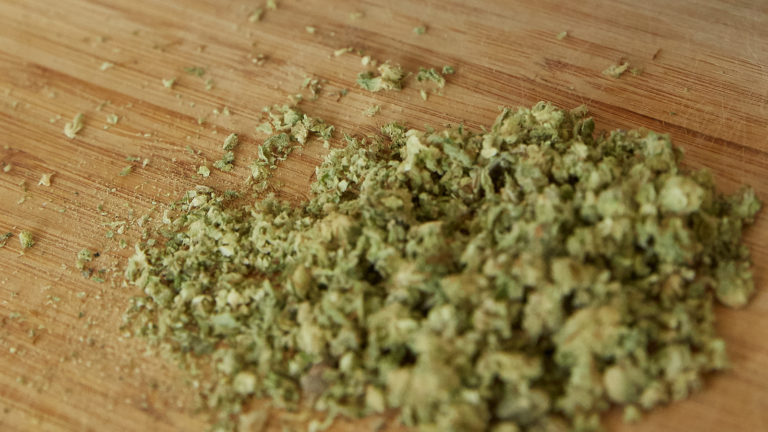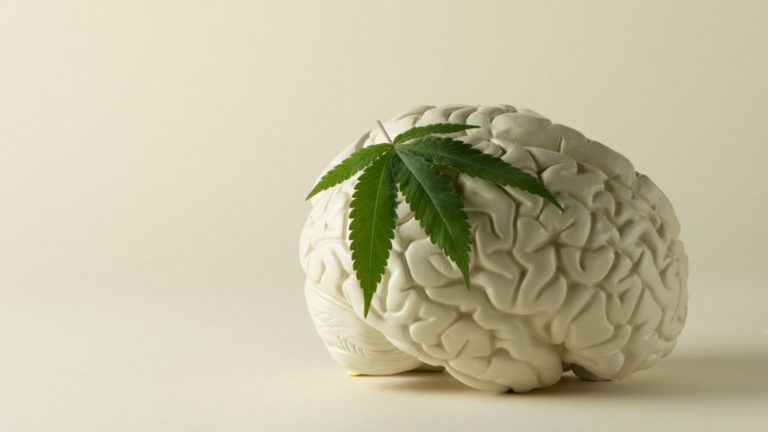As cannabis legalization began taking root across the United States, a number of impostor products commonly referred to as K2 or Spice started popping up. So, what's the deal with all the synthetic weed?
Synthetic marijuana is usually made of a mixture of herbs, spices, or shredded plant material sprayed with lab-made cannabinoids that can result in potentially dangerous effects when consumed.
 Photo by: Gina Coleman/Weedmaps
Photo by: Gina Coleman/WeedmapsImage lightbox

In May 2018, more than 50 Brooklyn residents overdosed on K2 within the span of a few days, raising concerns nationwide. The epidemic spurred city officials into action, as Gov. Andrew Cuomo announced a multi-agency initiative that included clinical guidance for mental health professionals and emergency room staff. The perils of synthetic marijuana also struck other regions of the US in July 2018, when officials from Washington, D.C., claimed that a bad batch of synthetic marijuana was potentially connected to four deaths and had sickened more than 100.
Despite attempts to control the hazardous effects of so-called synthetic marijuana, it seems few have attempted to comprehend how this substance differs from other synthetic cannabinoids made in a laboratory setting. Spice, K2, Black Mamba, and other synthetic cannabinoids are typically referred to as synthetic marijuana, but this term is scientifically inaccurate.
This lack of understanding has sparked confusion among those who might hear the term synthetic cannabinoids and instantly think about the perilous fake weed that has caused intense paranoia, hallucinations, and in some cases, overdoses. The full truth about synthetic cannabinoids, however, is buried somewhere underneath the nationwide synthetic marijuana scandal.
The difference between synthetic weed and synthetic cannabinoids
From a scientific perspective, synthetic marijuana technically doesn't exist. In reality, synthetic cannabinoids are sprayed on dry herbs or plant material that's marketed as an alternative to natural marijuana. Although the chemicals in synthetic marijuana bind to cannabinoid receptors in a similar way to natural cannabis molecules, they do so in a way that makes the chemicals in K2 or Spice much more potent, leading them to produce stronger and more intense side effects.
One study, published in Front Public Health on June 7, 2018, observed and compared the effects of synthetic versus non-synthetic cannabinoid drugs, and found the synthetically produced substances appeared to produce more adverse effects in subjects. The researchers pointed out that while natural THC from cannabis is a partial agonist for the brain's cannabinoid receptors, synthetic cannabinoids are complete agonists, meaning they produce a much greater effect on the receptors. Compared with cannabis and other psychoactive substances, synthetic cannabinoids were also associated with a greater risk of developing serious mental health disorders.
 Photo by: Gina Coleman/Weedmaps
Photo by: Gina Coleman/WeedmapsImage lightbox

“The use of synthetic cannabinoid drugs is associated with more undesired effects including agitation, irritability, confusion, hallucinations, delusions, psychosis, and death,” the study concluded.
It's important to note, however, that the synthetically produced compounds sprayed onto so-called synthetic marijuana do not have the same adverse side effects as some other synthetic cannabinoid products produced in the laboratory setting. Adie Rae, Ph.D., a neuroscientist and Weedmaps scientific adviser, explained to Weedmaps that there are three different categories of synthetic cannabinoids:
- Research cannabinoids. Typically produced for research purposes only, these will likely never become available for public consumption.
- Pharmaceutical cannabinoids. Molecules made by pharmaceutical companies that produce cannabis-like effects. Several synthetic cannabinoid drugs have been approved by the U.S. Food and Drug Administration (FDA), such as Dronabinol.
- Illicit cannabinoids. Found in substances such as Spice and K2, these are typically created outside of the U.S. by unregulated manufacturers and have proven to be highly dangerous.
“All illicit synthetic cannabinoids are dangerous,” Rae explained. “Despite their seemingly harmless place on a retailer's shelf, there are unknown risks hiding within those packages. None of them have been studied for effectiveness, and there is plenty of evidence about their harm.”
On the positive side, researchers are experimenting with synthetic cannabinoids that could be helpful rather than hazardous. As more people have become acquainted with the purported health benefits of CBD, interest in the other 100 or so cannabinoids has grown.
For example, Canadian biotech firm Willow Biosciences announced in November 2020 that it had produced commercially significant quantities of the cannabinoid cannabigerol (CBG) in the lab. The company's test runs produced 500 liters (130 gallons) that sold out quickly to global cosmetic, food and beverage, and nutraceutical companies. An additional 17 producers are clamoring for the next batch of sample CBG. Willow is also ramping up production of other synthetic cannabinoids, including cannabigerovarin, cannabidivarin, and tetrahydrocannabivarin.
In fact, cannabis data firm Headset reported that tinctures infused with cannabinoids other than CBD and THC rose by more than 10% from the second quarter to the third. Big Tobacco is even taking notice. Altria Group (Marlboro, Newport) invested in Cronos after the Canadian cannabis firm announced a deal to produce cannabinoids from yeast.
Synthetic cannabinoids are attractive to food, beverage, cosmetic, and other companies because the lab process, unlike the natural one, can reliably produce a very consistent product in great quantities. There's no need to plant seeds, wait for harvest time, and then extract compounds from plants that may have a varied cannabinoid profile. Labs deliver predictable results, which is what a global supply chain needs.
While Rae believes that whole-plant cannabis is more effective at providing synergistic symptom relief, she acknowledges the potential benefits of certain synthetic cannabinoids.
“If we are talking about the FDA-approved cannabinoids like dronabinol, then cannabis appears to be much more beneficial,” Rae said. “Dronabinol is taken orally, which means it takes a very long time to kick in; vaporized cannabis is effective almost immediately.”
Bottom line
In 2018 and 2019, many people became ill from using K2, Spice, Black Mamba, and other brands of what was erroneously called synthetic marijuana or fake weed. Some consumers were hoping to avoid positive drug tests while others were simply looking for a legal, less expensive alternative to black-market marijuana.
Whatever the reason, enough people were injured or died that demand diminished. While illicit and dangerous synthetic cannabinoids are still out there, the bigger focus today is on legitimate biotech companies creating lab-based versions of cannabinoids in direct competition with natural cannabis farmers. Whether lab-grown or outdoor-grown wins out ultimately depends on consumers and what they want from their cannabis.
Major contributions from Dr. Adie Rae.

